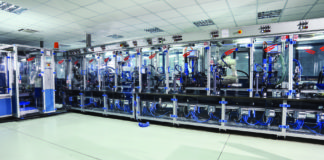«We rely so much on electric motors that we often notice them for the first time when they are broken: a problem that can be absolutely prevented, through the tests on electric motors», writes Ansys in a press release, giving broad room to the importance of tests on electric motors carried out during all phases of their lifecycle. Even if the specific tests executed will vary according to the complexity of the motor, of its application and of the parameters to be assessed, some of the key tests used during the tests on electric motors include electrical tests such as polarity checks and voltage level measurements and vibration tests to detect any imbalances or misalignments.
There are also thermal tests to monitor the motor’s temperature to avoid overheating, dynamic tests to see how the motor performs in transient states, noise tests to evaluate acoustic characteristics against sound standards and, finally, insulation tests to ensure the motor’s insulation materials won’t degrade while operating.
In each application where electric motors are used, from industrial compressors to dental drills, tests validate that a motor satisfies the specifications established by the manufacturer and the quality and safety parameters determined by sector standards.
On a world scale, standards such as interoperability and safety are consistent according to each single Country, while local standards can include requisites that acknowledge the Country’s specific priorities, such as environment and culture.
A following step? The use of simulation in the tests on electric motors improves the speed, the efficiency of the test process itself, the quality, the depth and the reliability or certainty of the collected data. Simulation software like Ansys Maxwell and Ansys Motor-CAD can perform coupled multi-physical calculations, providing technicians with in-depth estimates of complex systems, evaluations that would be unfeasible with a test at a time.





